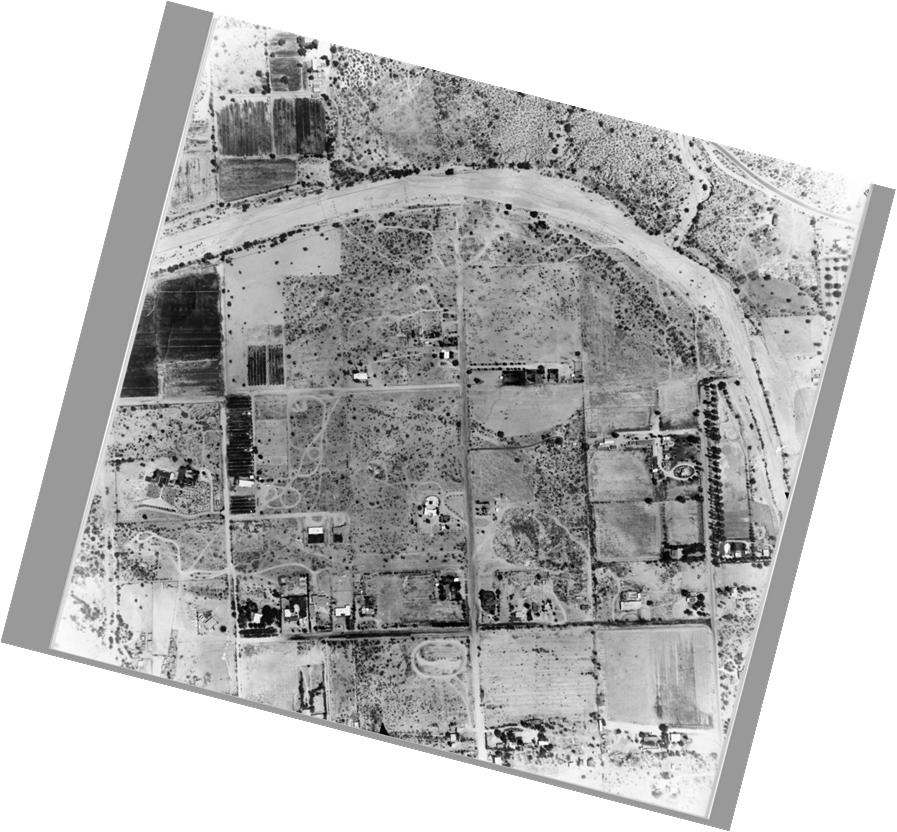Friends of Rio Vista distributes bimonthly bulletins via email and publishes key information from these bulletins here. To start receiving our bulletins, sign up here.
In this issue, we focus on two contributions from Julia Fonseca of Madrean Resources, LLC: one on the history of land use at Rio Vista and the other on stinknet, an invasive plant threatening native plant communities.

Thank you so much for your support for protecting and enhancing the natural assets of Rio Vista.
The Changing Face of Rio Vista: Snapshots from the Air
The more we know about what Rio Vista’s landscape looked like in the past, the better-informed managers’ conservation decisions can be. Julia Fonseca offered to compare aerial imagery of the park — over more than 80 years — as snapshots of this landscape’s transformation. Her report, Rio Vista Natural Resource Park, 1936–2021: A History of Land Cover Change, is a joint publication of Madrean Resources, LLC, and Friends of Rio Vista and the latest in the Rio Vista Conservation Project publication series.
To read the report from our website, click here. Julia begins the series of aerial photographs with the 2021 shot and moves backward in time, to give you a sense of familiarity with current conditions before plunging you into the past.
Julia recently retired from her position as environmental planning manager for the Pima County Office of Sustainability and Conservation and is a principal, with her husband, Dale Turner, of the ecological consulting firm Madrean Resources, LLC. Thank you, Julia!
Beware the Spread of Stinknet: What You Can Do to Stop This Threat to Native Plants
Guest Article by Julia Fonseca
A new invasive plant is spreading into Pinal and Pima Counties. This plant (Oncosiphon piluliferum) is a noxious weed that crowds out the potential for other native flowers, especially annuals, to flourish in springtime.

Stinknet removals are occurring around Amphi High School, along the Loop. See a map at Stinknet.org. Help protect native plants and habitats by looking for and removing this plant. Look for attractive yellow, rounded flower heads that lack petals, or check out this brochure.
Stinknet plants are flowering and will soon set seed. Now is the time to stop the spread before the seeds ripen and have a chance to disperse. It’s easy to pull!
Note: Julia highly recommends this University of Arizona Cooperative Extension paper on stinknet by Michael Chamberland. Thank you, Michael, for sharing this information with us!
